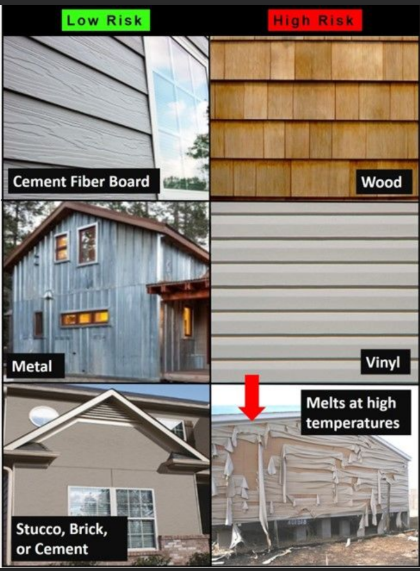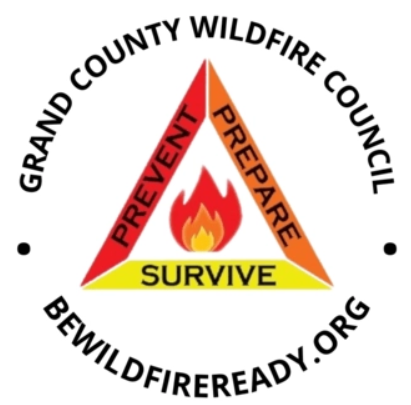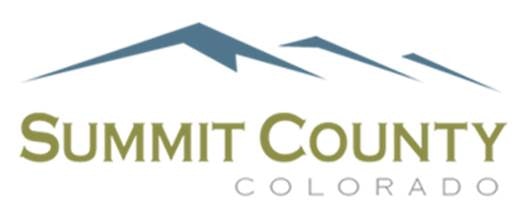Preparing for Wildfire Season
When we think about wildfire season, in the past we would have thought (almost exclusively) about the hot dry summer months. Nowadays, wildfire season is beginning earlier in the spring and lasting longer into the fall and winter. After all, the East Troublesome Fire was in late October and the Marshall Fire (in Boulder) was just after Christmas. Accordingly, "preparing for wildfire season" is now a year-round activity.
In a recent training held by the Grand County Wildfire Council (GCWC), residents learned about actions they could take to better prepare their home for the next wildfire. As the presenter, Katlin Miller, put it, "It’s not where the home is located that necessarily determines its ignition risk, it’s how ignitable the home is as determined by the Home Ignition Zone (HIZ)."
How Homes Ignite

Homes ignite in three main ways: radiant heat from high intensity crown fires, direct flame contact through surface fires, and by embers that can be blown up to a mile and a half away from the approaching fire. Ember fires often account for up to 80% of all wildfire losses. It is because of these potential ember fires -- and the fact that fires only ignight where the requirements of combustion are met -- that we must focus on mitigation and preventative actions that reduce our home’s ignitability. For example, the home's construction (materials used in construction), the home's attachments (garage, deck, fence), the landscaped area within 100 feet of the home, and the homesite characteristics (slope, driveway, and natural features) all impact a home's ignitability.
Home Ignition Zone Assessment
Katlin said the FIRST STEP in preparing your home for wildfire is getting a free Home Ignition Zone (HIZ) assessment. You can schedule a free assessment through Grand County Wildfire Council's website: Wildfire Risk Assessments - Grand County Wildfire Council. In Summit County, contact Summit Fire & EMS (970-262-5100) or Red White & Blue Fire (970-453-2474).

While waiting for a professional to come out as assess your home, you may start with the Online Defensible Space & Home Hardening SELF-ASSESSMENT.
This self-guided form will present simple questions about one's home with photos of low risk and high risk scenarios. As you work through the form, you will gain a sense of what actions to take on your home and property. The self-assessment does not collect personal information and answers are not shared with anyone; it is truly for your information only.
Home Hardening

When deciding on which projects to take on first, GCWC recommends starting with projects on the home, known as "Home Hardening". Most home hardening recommendations are most efficiently installed when building or remodeling a home. Nevertheless, there are actions that existing homeowners can take to improve their structure's fire rating. For example, home hardening often focuses on the construction materials used (i.e. roof, siding, vents and windows). You might not be able to change the siding of your home very easily, but you could install metal mesh screens on vents or replace single-pane windows with double or triple-pane windows. When it is time to replace or repair your roof, you could consider tossing the wood shingles for metal, asphalt or tile. Home hardening also includes looking at your decking and fencing to ensure they are made of ignition-resistant materials. For fences that abut the home, the first five feet from the home should be non-combustible.
Defensible Space

When thinking about the space around your home, wildfire mitigation specialists often talk about the "Three Zones of Defensible Space". Zone 1 (0-5 feet from the home) is the most important zone and the first zone a homeowner should mitigate. Essentially, NOTHING in Zone 1 should be combustible - no trees, shrubs, grasses; no firewood piles or storage under the deck; no overhanging branches or accumulation of leaf and needle litter. In Zone 2 (5-30 feet from the home), there can be vegetation, but grasses must be mowed. Trees and shrubs should be well-spaced and pruned to minimize "ladder fuels". Ladder fuels are vegetation (grasses, shrubs, and low-hanging branches) near the ground that ignite in a surface fire and allow the fire to climb up the tree into the canopy. Zone 3 (30-100 feet from the home) is about maintaining access to the home and managing for healthy, thinned vegetation. Zone 3 is where firewood piles should be kept when there is not snow on the ground and where propane tanks should be located. Maintaining a driveway that is clear of vegetation is also essential. In subdivisions, Zone 3 often overlaps with neighbors' Zone 3, so working with one's neighbors is important for establishing fire adapted communities.
Knowledge to Action
Learning about wildfire mitigation one should take is great, but knowledge is nothing without action.
GCWC encourages all residents and second homeowners to engage in wildfire mitigation by taking advantage of local wildfire mitigation opportunities.
Grand County

GCWC makes and sells personalized reflective address signs so emergency personnel can find your home in dark and smoky conditions. We also have Fuels Reduction Cost-Share Programs where landowners can receive up to 50% reimbursement for fuels reduction work performed by a contractor. Lastly, every summer, GCWC hosts several Community Chipping Days throughout the county for residents to bring their slash and have it chipped.
Reflective Address Signs - Grand County Wildfire Council
Cost-Share Programs - Grand County Wildfire Council
Community Chipping Days - Grand County Wildfire Council
GCWC also has several FREE educational events this summer. There will be three more public trainings (Friday evenings from 5-7pm in Granby) that all interested parties are encouraged to attend. The next training (6/20/25) is on Firewise Communities and GCWC Programs; another one (7/11/25) is on Wildfiire and Insurance; and the last one (8/15/25) is on the new State WUI Code. Lastly, we will have three showings of the PBS Documentary "Weathered: Inside the LA Firestorm. Check out our Upcoming Events page for dates.
Summit County

Summt County Wildfire Council has several grant opportunities for homeowners to do hazardous fuels reduction, for communities to install water supplies or improve evacuation routes, and more. Summit County also has a Chipping Program whereby a contracted chipper makes its way through Summit County neighboods on a preestablished schedule to do drive-by chipping.
Summit County Wildfire Mitigation Grants
Summit County Chipping Program
Ultimate Wildfire Guide
If you want more information on all things wildfire in Grand or Summit Counties, check out the Ultimate Wildfire Guide.
Ultimate Wildfire Guide - Middle Park Conservation District
This guide has it all, including sections on Local Fire Districts, Emergency Notifications, Forest Health and Management, Fire Restrictions and Open Burning, Fire Adapted Communities and Fire Mitigation, and Post-Fire Recovery.
